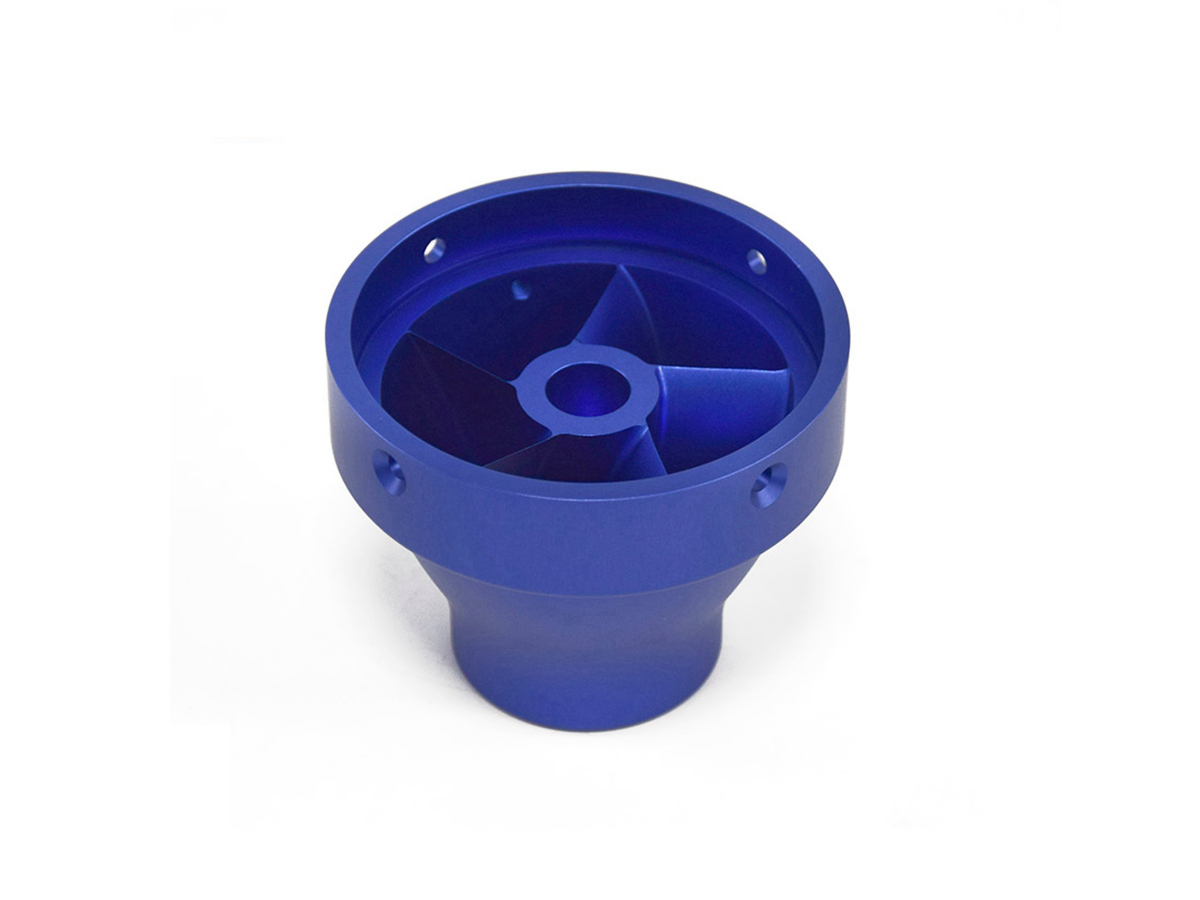CNC Machining and Power Generation: Leveraging Aluminum 6060 for Reliable Components
Introduction
The power generation industry increasingly demands reliable, efficient, and long-term durability components. Aluminum 6060, renowned for its excellent machinability, corrosion resistance, lightweight properties, and high surface finish potential, is ideally suited for critical applications in power generation equipment. Typical components include cooling system parts, structural frames, mounting brackets, and protective enclosures.
Employing advanced CNC machining technology, power generation manufacturers precisely produce Aluminum 6060 components with tight dimensional tolerances and intricate geometries. CNC machining ensures high-quality, consistent components that enhance system reliability, reduce maintenance requirements, and improve overall operational efficiency.
Aluminum 6060 for Power Generation Applications
Material Performance Comparison
Material | Tensile Strength (MPa) | Yield Strength (MPa) | Density (g/cm³) | Typical Applications | Advantage |
|---|---|---|---|---|---|
190 | 150 | 2.70 | Cooling components, equipment enclosures | Excellent machinability, corrosion resistance | |
310 | 276 | 2.70 | Structural brackets, heavy-duty mounts | High strength, weldability | |
570 | 505 | 2.81 | High-load parts, structural supports | Superior strength-to-weight, fatigue resistance | |
320 | 160 | 2.76 | Complex casings, gearboxes | Excellent castability, dimensional stability |
Material Selection Strategy
Selecting appropriate aluminum alloys for power generation relies on factors like strength requirements, corrosion resistance, and machining characteristics:
Cooling system components, protective enclosures, and parts requiring excellent machinability with moderate strength (190 MPa tensile) benefit significantly from Aluminum 6060, providing reliability and effective corrosion resistance.
Structural brackets, robust mounts, and heavier-duty support demanding higher mechanical strength (310 MPa tensile) and weldability typically select Aluminum 6061-T6, ensuring durable, long-term performance.
High-load bearing parts, turbine supports, and critical structural elements needing maximum strength (570 MPa tensile) and excellent fatigue resistance utilize Aluminum 7075-T6, significantly enhancing equipment reliability.
Complex gearboxes, intricate casings, and precision housings benefiting from excellent castability and dimensional stability prefer Aluminum ADC12 (A380), optimizing production efficiency and component precision.
CNC Machining Processes
Process Performance Comparison
CNC Machining Technology | Dimensional Accuracy (mm) | Surface Roughness (Ra μm) | Typical Applications | Key Advantages |
|---|---|---|---|---|
±0.02 | 1.6-3.2 | Simple enclosures, brackets | Economical, reliable accuracy | |
±0.015 | 0.8-1.6 | Rotational parts, mounting brackets | Improved precision, reduced setups | |
±0.005 | 0.4-0.8 | Complex cooling systems, intricate frames | Superior accuracy, excellent surface finishes | |
±0.003-0.01 | 0.2-0.6 | High-precision sensors, micro-components | Maximum precision, detailed geometries |
Process Selection Strategy
Selecting the ideal CNC machining process for Aluminum 6060 components depends on part complexity, required precision, and performance expectations:
Simple enclosures, brackets, and standard equipment components requiring moderate precision (±0.02 mm) economically utilize 3 Axis CNC Milling, delivering consistent results at competitive costs.
Rotational parts, mounting brackets, and moderately complex fittings needing improved accuracy (±0.015 mm) effectively use 4 Axis CNC Milling, minimizing setups and ensuring dimensional reliability.
Complex cooling system components, intricate structural frames, and precision parts demanding tight tolerances (±0.005 mm) and high surface finishes (Ra ≤0.8 μm) significantly benefit from 5 Axis CNC Milling, optimizing component performance and reliability.
High-precision sensors, micro-components, and highly detailed parts requiring extreme precision (±0.003 mm) and complex geometry leverage Precision Multi-Axis CNC Machining, maximizing accuracy and ensuring reliability.
Surface Treatment
Surface Treatment Performance
Treatment Method | Corrosion Resistance | Wear Resistance | Max Operating Temp (°C) | Typical Applications | Key Features |
|---|---|---|---|---|---|
Excellent (≥800 hrs ASTM B117) | Moderate-High | Up to 400 | Cooling system parts, enclosures | Enhanced corrosion resistance, aesthetic finishes | |
Excellent (≥1000 hrs ASTM B117) | Moderate | Up to 150 | Internal supports, fittings | Superior corrosion protection, good paint adhesion | |
Excellent (≥1000 hrs ASTM B117) | High | Up to 200 | Equipment casings, protective covers | Durable, attractive finish | |
Excellent (~900 hrs ASTM B117) | Moderate | Up to 300 | Precision internal components | Smooth finish, friction reduction |
Surface Treatment Selection
Choosing surface treatments for Aluminum 6060 parts in power generation involves evaluating corrosion protection, operational wear, and component aesthetics:
Cooling system parts and visible equipment enclosures benefit significantly from Anodizing, which provides durable corrosion resistance and appealing surface aesthetics.
Internal supports, precision brackets, and fittings requiring excellent corrosion protection and paint adhesion typically select Chemical Conversion Coating (Alodine), significantly extending component lifespan.
Protective covers, external equipment casings, and exposed parts demanding high wear resistance and attractive appearance utilize Powder Coating, offering robust protection and improved visual quality.
Precision internal components and sensitive equipment parts needing smooth finishes and friction reduction benefit from Electropolishing, enhancing both operational efficiency and durability.
Quality Control
Quality Control Procedures
Precise dimensional verification using Coordinate Measuring Machines (CMM) and optical comparators.
Surface roughness assessment using precision profilometers.
Mechanical property testing (tensile, yield, fatigue) per ASTM standards.
Corrosion resistance verification through ASTM B117 (Salt Spray Test).
Non-destructive testing (NDT), including ultrasonic and X-ray inspections.
Comprehensive documentation complying with ISO 9001 and power generation-specific quality standards.
Industry Applications
Aluminum 6060 Power Generation Component Applications
Cooling system components and heat exchanger parts.
Protective enclosures and equipment casings.
Structural frames and lightweight mounting brackets.
Precision sensor housings and internal equipment fittings.
Related FAQs:
Why choose Aluminum 6060 for power generation components?
How does CNC machining enhance Aluminum 6060 part reliability?
Which power generation components are ideal for Aluminum 6060?
What surface treatments enhance the durability of Aluminum 6060 parts?
What quality standards apply to CNC machining of Aluminum 6060 in power generation?

